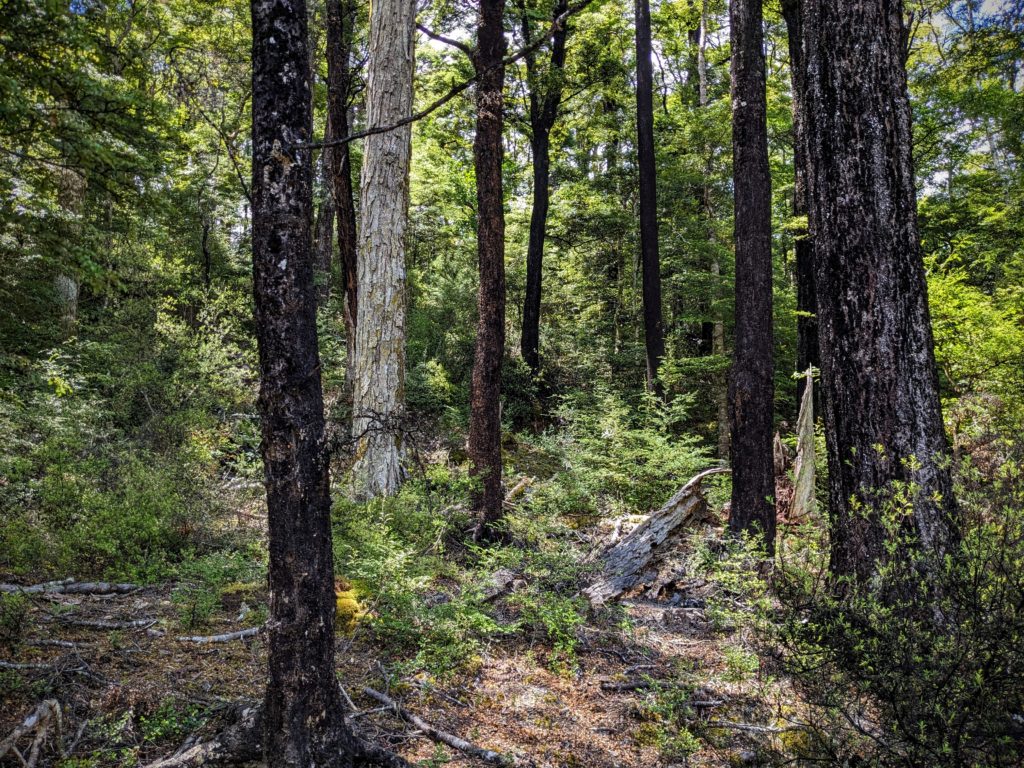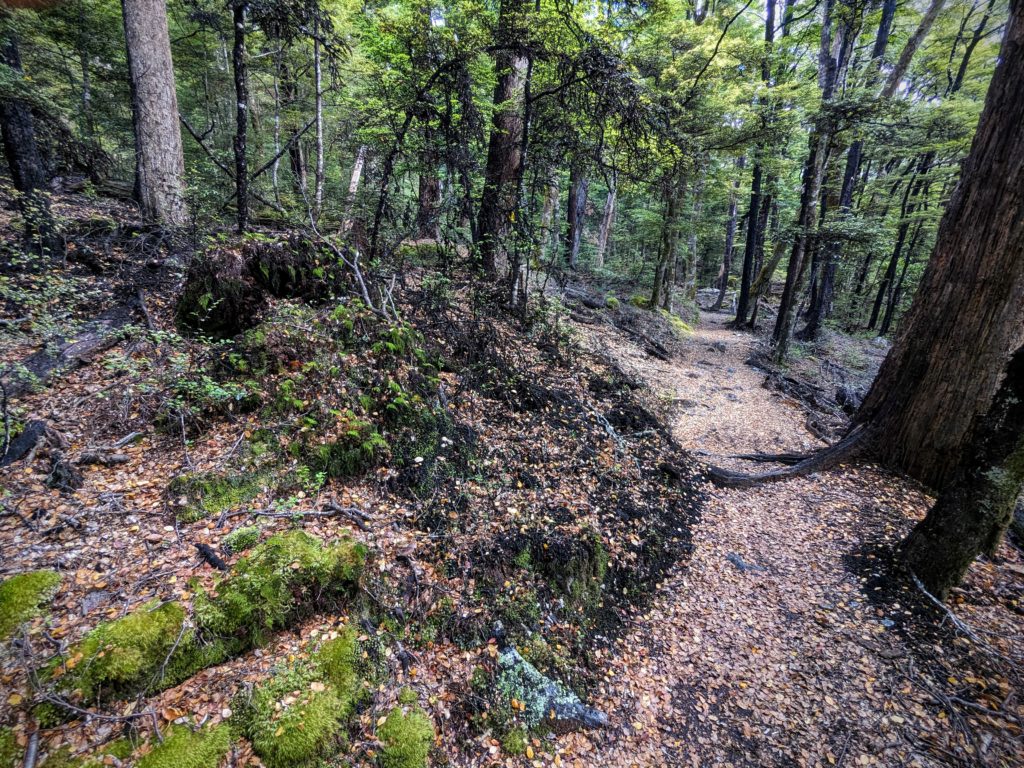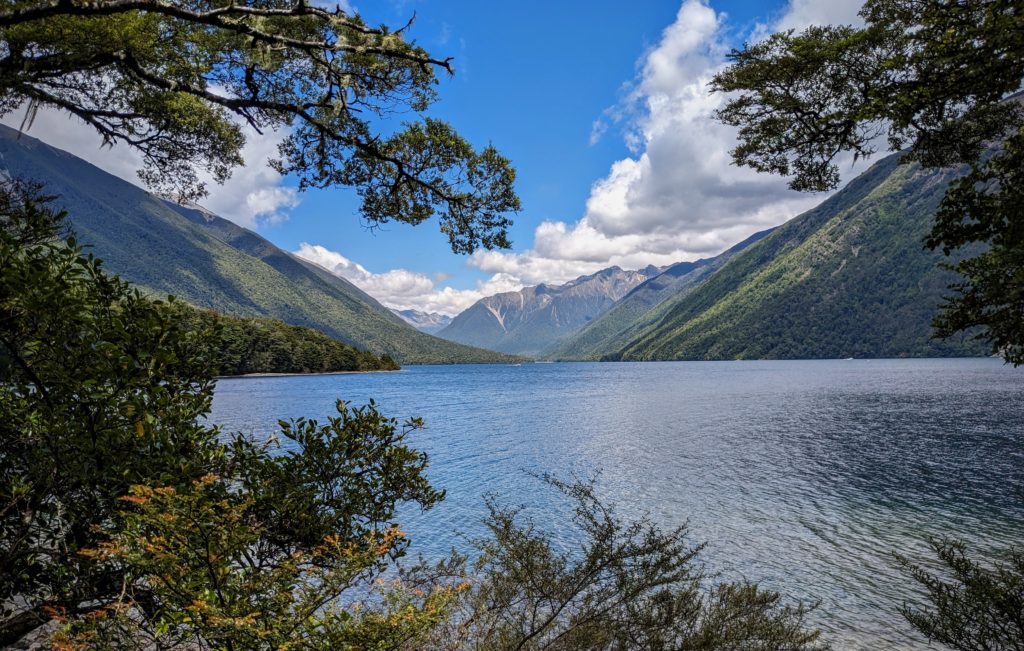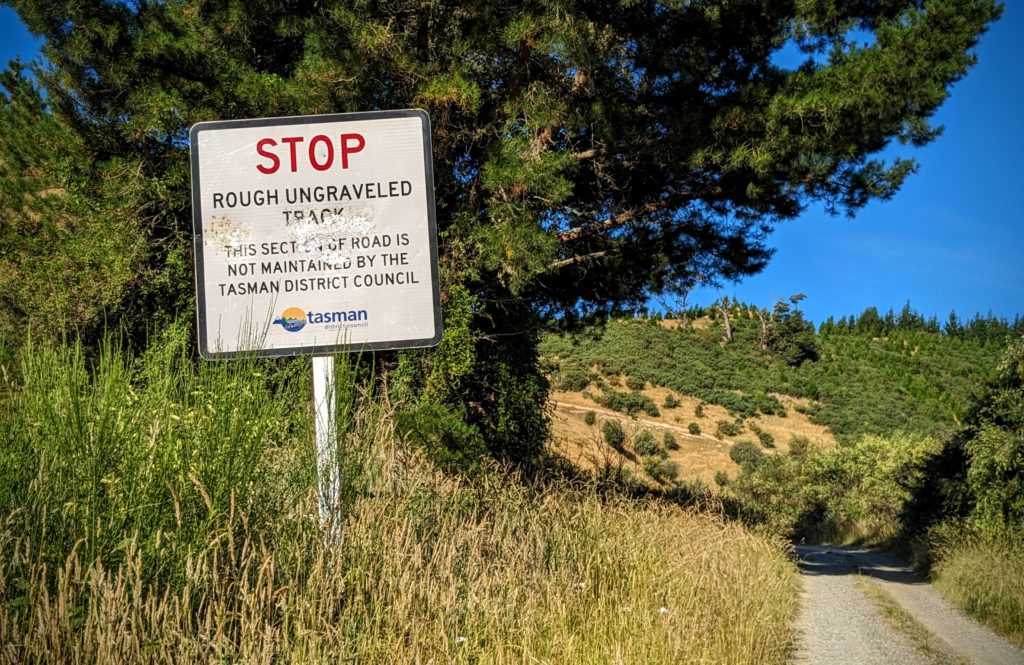December 27, 2023 Different Island…(Day 91)
…Different Forest! We drove south today, through a valley bordered by rolling hills called Golden Downs. This is the fruit basket of New Zealand, lots of berry patches and farms. Also a hop growing region, hence an area of great craft breweries! Our destination was Nelson Lakes National Park, the northernmost portion of the Southern Alps, to the smaller of the 2 main glacially carved lakes, Lake Rotoiti (row-toe-ee-tee) meaning ‘small lake’. We reached the tiny town of St. Arnaud and took a quick walk around the visitors center before we headed down a short road and finally got to the lake edge!

We got vibes of British Columbia, Canada at the edge of the glacial lake!
The mountain peaks are above timberline and the forest is devoid of the iconic tree ferns that characterize the prehistoric-feeling forests of the North Island. The forest in this area that gets winter snows enough to host a ski area, are primarily beech trees. Beech forest tends to grow mainly on the drier, eastern side of the mountains, higher up, and in the cooler south.

We started our hike on the lake circuit track through the beech forest.

The track is lush, with lots of streams flowing across the trail carpeted with fallen leaves.
Some trees look burnt, covered with black mould that seems to flow down the trunks and over the ground. Many trees also look hairy, with small white hair-looking growths with tiny drops of moisture on the tips. We learned from information plaques (and a brief glance at information in the visitors center) that this is a unique ecosystem in the beech forests that many native animals are dependent on. A tiny insect burrows into the bark of particular species of beech trees to feed on the sap. It’s waste is excreted through long anal tubes that emerge from the tree bark, the tiny white ‘hairs’. The waste is a sweet honey-like fluid called honeydew that many native birds, bats, insects and even lizards feed on! The honeydew also feeds the black mould that flows down the tree and ground, creating habitat for other animals. The insect and the mould do not seem to harm the trees, however, an introduced wasp has become dominant in feeding on the honeydew and depriving the native animals of this necessary food source. The Rotoiti Nature Recovery Project is tackling the problem with a wasp control program. More information is HERE.

The ‘honeydew’ droplets on the tips of the anal tubes of the scale insect.

As we walked further up the track we got glimpses of the mountains surrounding the lake.
You can almost imagine mountain goats and grizzly bears on the mountain slopes, but you’re not in Canada! However, weather and some plants can kill you in New Zealand! The forest even has a different scent than the flowery, tropical scent of the forests we encountered on the North Island. Here, the scent is more spicy. I didn’t see an abundance of flowers, so maybe it’s the honeydew or the mould, but it seemed almost like caramelized sugar with an overlay of strong rosewater. Although there was lots of water on the trail and decomposing trees and leaves, there was no hint of the smell of decomposition. We reached our goal of 4 miles and returned on the same path. We ate our picnic lunch at the campground shelter and headed back through the fertile valley of hops and fruit to the old one room school house that marked our turn up the gravel road to our B&B.

The one room school house circa 1870’s.

The ‘scenic route’ back to our B&B!
